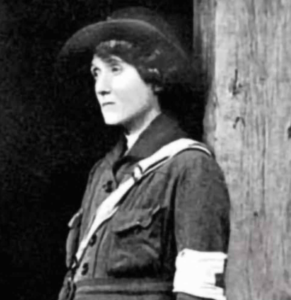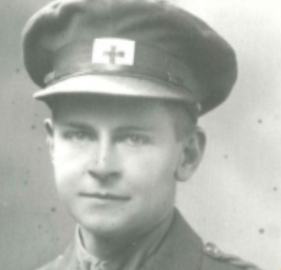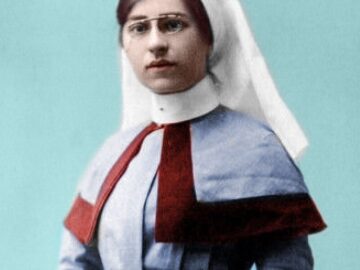Role: Women’s Sick and Wounded Convoy Corps

Stobart, firmly in the belief that a major war was imminent, drew up plans to contribute to the war effort by creating the Women’s Sick and Wounded Convoy Corps (WSWCC) in 1910.
Stobart travelled to Brussels on 18 August 1914 and sent word instructing the unit to come out with immediate effect. They converted university buildings that had been allocated for use as a hospital by her unit.
At one point, Stobart and some of her unit were captured by German troops and labelled. They were almost executed but were eventually saved by a sympathetic German officer who was married to an English woman. Stobart then established a hospital at the Château Tourlaville near Cherbourg. After her work in France she turned to help with the Typhus epidemic that was destroying Serbia.
Stobart’s actions caught the attention of the Royal Serbian Army. The medical division, in late September 1915, asked Stobart to command a frontline field hospital. Along with some doctors and nurses, sixty soldiers would be under her command. To suit this position, she was given the rank of Major, which made her the first known woman with the rank of major in the world. The unit was to be called the First Serbian-English Field Hospital (front).
In 1916, Stobart wrote The Flaming Sword in Serbia and Elsewhere, an account of her ordeal in Serbia illustrated with her own photographs and undertook British lecture tours, donating the proceeds to the Serbian Red Cross.





